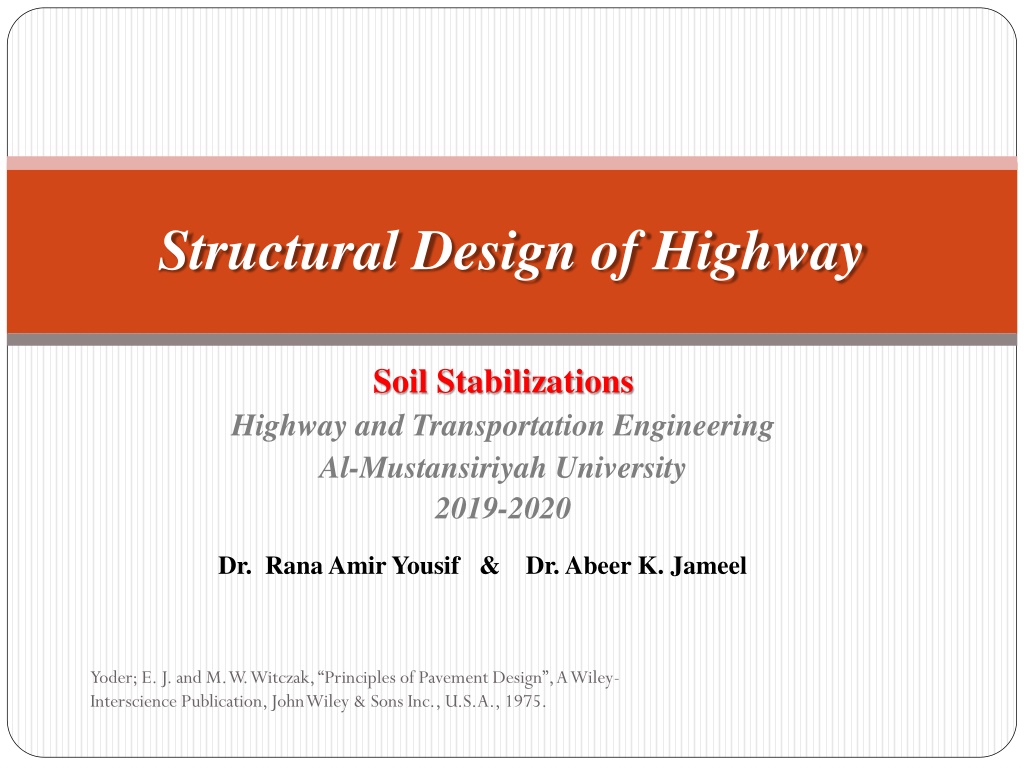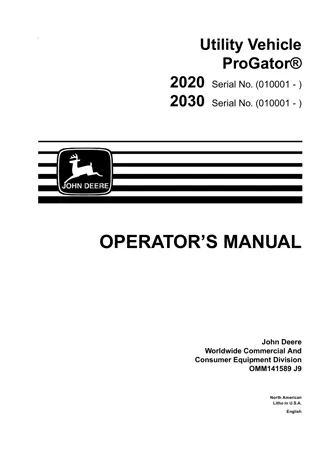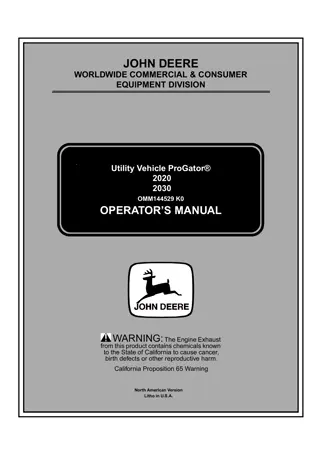
Highway Soil Stabilization Methods
Highway soil stabilization involves mechanical and chemical methods to enhance the engineering properties of natural soil. Mechanical stabilization blends different soil grades, while chemical stabilization utilizes agents like cement, lime, and asphalt. Cement stabilization involves adding Portland cement to soil, while lime stabilization is effective for clayey soils. Both methods increase soil strength and durability for use in highway construction.
Download Presentation

Please find below an Image/Link to download the presentation.
The content on the website is provided AS IS for your information and personal use only. It may not be sold, licensed, or shared on other websites without obtaining consent from the author. If you encounter any issues during the download, it is possible that the publisher has removed the file from their server.
You are allowed to download the files provided on this website for personal or commercial use, subject to the condition that they are used lawfully. All files are the property of their respective owners.
The content on the website is provided AS IS for your information and personal use only. It may not be sold, licensed, or shared on other websites without obtaining consent from the author.
E N D
Presentation Transcript
Structural Design of Highway Soil Stabilizations Highway and Transportation Engineering Al-Mustansiriyah University 2019-2020 Dr. Rana Amir Yousif & Dr. Abeer K. Jameel Yoder; E. J. and M. W. Witczak, Principles of Pavement Design , A Wiley- Interscience Publication, John Wiley & Sons Inc., U.S.A., 1975.
References Nicholas J. Garber and Lester A. Hoel. Traffic and Highway Engineering , Fourth Edition. Yoder; E. J. and M. W. Witczak, Principles of Pavement Design , A Wiley- Interscience Publication, John Wiley & Sons Inc., U.S.A., 1975. Yaug H. Huang, Pavement Analysis and Design , Prentic Hall Inc., U.S.A., 1993. AASHTO Guide for Design of Pavement Structures 1993 , AASHTO, American Association of State Highway and Transportation Officials, U.S.A., 1993. Oglesby Clarkson H., HighwayEngineering , John Wiley & Sons Inc., U.S.A., 1975. Yoder; E. J. and M. W. Witczak, Principles of Pavement Design , A Wiley- Interscience Publication, John Wiley & Sons Inc., U.S.A., 1975.
Soil Stablization Soil stabilization is the treatment of natural soil to improve its engineering properties. Soil stabilization methods can be divided into two categories, namely, mechanical and chemical. Mechanical stabilization: is the blending of different grades of soils to obtain a required grade. Chemical Stabilization: is the blending of the natural soil with chemical agents. Several blending agents have been used to obtain different effects. The most commonly used agents are Portland cement, asphalt binders, and lime. Yoder; E. J. and M. W. Witczak, Principles of Pavement Design , A Wiley- Interscience Publication, John Wiley & Sons Inc., U.S.A., 1975.
1. Soil stabilization with cement: The soil stabilized with cement is known as soil cement. Cement stabilization of soils usually involves the addition of 5 to 14 percent Portland cement by volume of the compacted mixture to the soil being stabilized. The cementing action is believed to be the result of chemical reactions of cement with siliceous soil during hydration reaction. The important factors affecting the soil cement are nature of soil content, conditions of mixing, compaction, curing and admixtures used. The procedure for stabilizing soils with cement involves: Pulverizing the soil Mixing the required quantity of cement with the pulverized soil Compacting the soil cement mixture Curing the compacted layer Yoder; E. J. and M. W. Witczak, Principles of Pavement Design , A Wiley- Interscience Publication, John Wiley & Sons Inc., U.S.A., 1975.
2. Soil Stabilization using Lime: Slaked lime is very effective in treating heavy plastic clayey soils. Lime may be used alone or in combination with cement, bitumen or fly ash. Sandy soils can also be stabilized with these combinations. Lime has been mainly used for stabilizing the road bases and the subgrade. The addition of lime leads to increase the strength and durability of soil. Normally 2 to 8% of lime may be required for coarse grained soils and 5 to 8% of lime may be required for plastic soils. The amount of fly ash as admixture may vary from 8 to 20% of the weight of the soil. Yoder; E. J. and M. W. Witczak, Principles of Pavement Design , A Wiley- Interscience Publication, John Wiley & Sons Inc., U.S.A., 1975.
3. Soil Stabilization with Bitumen: Stabilization is carried out to achieve one or both of the following: Waterproofing of natural materials Binding of natural materials Waterproofing the natural material through asphalt stabilization aids in maintaining the water content at a required level by providing a membrane that impedes the penetration of water, thereby reducing the effect of any surface water that may enter the soil when it is used as a base course. In addition, surface water is prevented from seeping into the subgrade, which protects the subgrade from failing due to increase in moisture content. Binding improves the durability characteristics of the natural soil by providing an adhesive characteristic, whereby the soil particles adhere to each other, increasing cohesion. Yoder; E. J. and M. W. Witczak, Principles of Pavement Design , A Wiley- Interscience Publication, John Wiley & Sons Inc., U.S.A., 1975.
Structural Design of Highway Dr. Rana Amir Yousif & Dr. Abeer K. Jameel Yoder; E. J. and M. W. Witczak, Principles of Pavement Design , A Wiley- Interscience Publication, John Wiley & Sons Inc., U.S.A., 1975.











